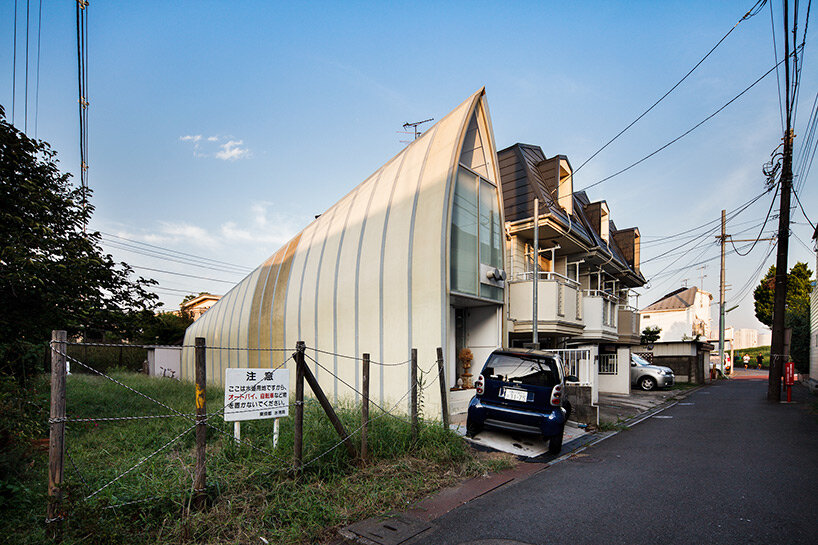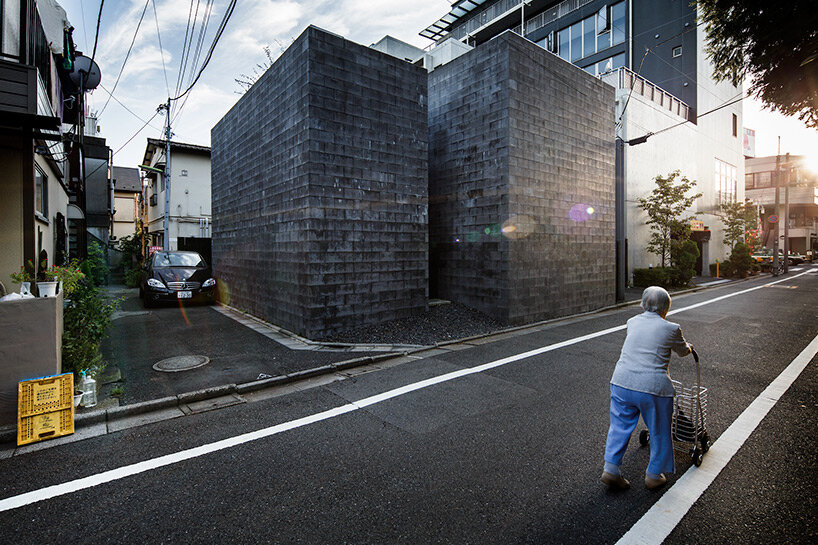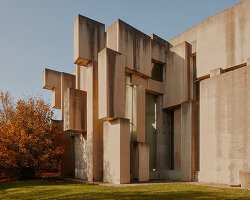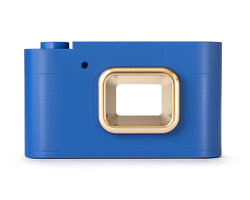self-trained architectural photographer
jérémie souteyrat is a french photographer who was born in lyon and has been living and working in london, UK, since 2018. after graduating as a mechanical engineer in 2001, souteyrat started taking his first photographs while traveling. in 2009, he decided to quit his job and move to japan, in order to discover a new culture and way of life. he then started working as a professional photographer in tokyo, where he received numerous human-centered assignments, capturing portraits of societal and cultural subjects for many prestigious newspapers and magazines from all over the world.
in 2010, jérémie souteyrat began strolling through the streets of his adopted city and documenting some its most special private houses. for four years, he captured a wide selection of residential projects, designed and built by famed studios like kengo kuma, atelier bow wow, go hasegawa, sou fujimoto, shigeru ban, and A.L.X. in september 2014, souteyrat published his first monograph ‘tokyo no ie’, a book compiling most of his tokyo studies, whilst highlighting his distinctive documentary approach. ‘architecture is a human-centered design field, so I didn’t want to consider the houses only as objects. it had to be connected to someone somehow,’ jérémie souteyrat tells designboom in our interview (read more below!)

on the cherry blossom by A.L.X.
all images courtesy of jérémie souteyrat
about ‘tokyo no ie’
‘tokyo no ie’ successfully portrays the photographer’s documentary slant, with souteyrat looking beyond the house as an entity, and delivering a wider picture. in other words, the focus is lifted off the specific features of the projects, and placed on the way in which they blend into the environment.
comprised of 144 pages, including 61 color photographs and an afterword written by kengo kuma, the book seeks to reflect the everyday existence of these houses. standing out amid the indistinguishable mass of buildings that surrounds them, the exceptional structures draw the attention of the passersby to remind them that even a seemingly dull area can reveal an architectural surprise to those who wish to discover it. to find more about his work, his relationship with japan, as well as his ‘tokyo no ie’ monograph, designboom got in touch with photographer jérémie souteyrat. read the interview in full below.

lucky drops by atelier tekuto
interview with jérémie souteyrat
designboom (DB): could you tell us a little bit about your background? when did you first become involved with architectural photography?
jérémie souteyrat (JS): I studied and worked as an engineer in my 20’s, but developed more and more interest in photography while traveling around the world. from a tool to capture memories, it turned into a proper way to express myself. my first trip to japan in 2005 was an important step into being a full-time photographer, as the pictures I took there have been quite well received. it was also the first step of a great love story with japan. a few years later I was able to move to japan and to dedicate my time to photography.
as a new professional photographer, I was trying a lot of different jobs to explore the different fields of photography and I got my first assignment in architectural photography. japan is a fantastic country for contemporary architecture and I tried to develop this field afterward, including my series ‘tokyo no ie’.

house tokyo by A.L.X.
DB: were you influenced by anyone in particular?
JS: I come from documentary / humanist photography, with influences like henri-cartier bresson, nan goldin, or magnum photographers in my early years. I am not only shooting architecture photography, so my influences now can be as diverse as portraitists richard avedon or diane arbus, along with landscape and architecture photographers like andreas gursky. my favorite photographer is still anders peterson, I admire how close to the person he photographs he can be.

ou-an by ken yokogawa
DB: in ‘tokyo no ie’, one can find photography of more than fifty contemporary buildings in tokyo, designed by various, well-known architects. is there a specific building that stands out for you?
JS: as a photographer, I can only be interested in spectacular buildings, amazing jewels, and surprises in the city. I think architecton & atelier tekuto are the most representative architects of this movement and have both several houses in my series.
I learned that these houses are not always the best to live in though, so from an architectural point of view, I would consider more humble designs. architecture has to be seen for real, has to be touched, has to be experienced. photography is just the first step. this is also why I photographed the houses as they are in real life: with the blinds, curtains, cars, garbage, etc. I tried to get away from PR images we usually see and go further in the user experience.

delta by architecton
JS: I focused on houses of the 21st century, built after 2000. they also had to be in the tokyo metropolis. I didn’t search for any architect in particular, I browsed as many architecture websites and old issues of japanese magazines as I could, searching for houses with unconventional shapes or relationships to the environment. I also cared about the direct surroundings of the house and if it would bring a good glimpse of tokyo’s daily life in the pictures (schools, cherry trees, shrines, shops, etc…).
ame/hare by mount fuji architects studio
DB: in all of your photos from the series, there is a human figure included. is it important to you to include human presence in your work?
JS: yes, very important. part of my interest in doing this series was to show tokyo’s residential areas and what is going on in these quiet neighborhoods. not much actually I am afraid, but still, I think my pictures are representative of this activity: a few social interactions, commuters, workers, etc.
architecture is a human-centered design field, so I didn’t want to consider the houses only as objects. it had to be connected to someone somehow. it is still rare to see people in architecture photography, but it is changing. even though it sometimes looks very commercial and sometimes tends towards fashion photography, I feel more attracted to this way of photographing buildings. it is actually not new: great photographers from the late 19th century like eugene atget or berenice abbott were the pioneers of this practice.
and lastly, people give scale in the photographs, which leads to a much better understanding of the building and the situation.

shimokitazawa house by niizeki
DB: what is the first thing you do when you arrive on-site? how long does it usually take you to take the ‘final’ shot?
JS: first I prepared the shoot in advance, choosing the best light and timing to go, depending on the surroundings and the photo opportunities.
when I arrived on site, I first checked that my predictions are good and that the picture is still worth it. tokyo changes quickly and it happened for instance that the old wooden house next to the brand new contemporary one had been torn down and that the house I wanted to photograph had lost its interest, without its previous environment.
then I spent about one hour on site with a couple of different angles and just waiting for something interesting to happen. when photographing people, you are never sure about getting the ‘final’ shot. life can be full of surprises and something different and unexpected can always happen. I gave each house the same ‘chance’ and usually stopped after one hour or so on site. it felt very long sometimes and it happened that only one person passed in my frame during that period…

swimmy house by starpilots
DB: is there a particular message that you want your ‘tokyo no ie’ series to convey?
JS: I hope first that it will help to spread the world that tokyo is not only the dense and crowded city we are often shown and that its residential areas are worth the visit as well.
japanese architecture is quite unique and innovative. due to rapid population growth since WW2, architects had to be creative, mixing a lot of constraints, while keeping the privacy, and dealing with small spaces. japan has its own rules, driven by local culture and environment, but I think it could be inspiring all over the world, as we face the same kind of challenges now.

house in nakameguro by yoritaka hayashi

laatikko by workshop kino
project info:
book title: tokyo no ie
photographer: jérémie souteyrat
format: paperback | 144 pages
dimensions: 190 x 260mm
publisher: seigensha art publishing
publication date: 01 may 2017
architectural photography (342)
architecture in japan (1574)
architecture in tokyo (332)
photography (402)
PRODUCT LIBRARY
a diverse digital database that acts as a valuable guide in gaining insight and information about a product directly from the manufacturer, and serves as a rich reference point in developing a project or scheme.



















